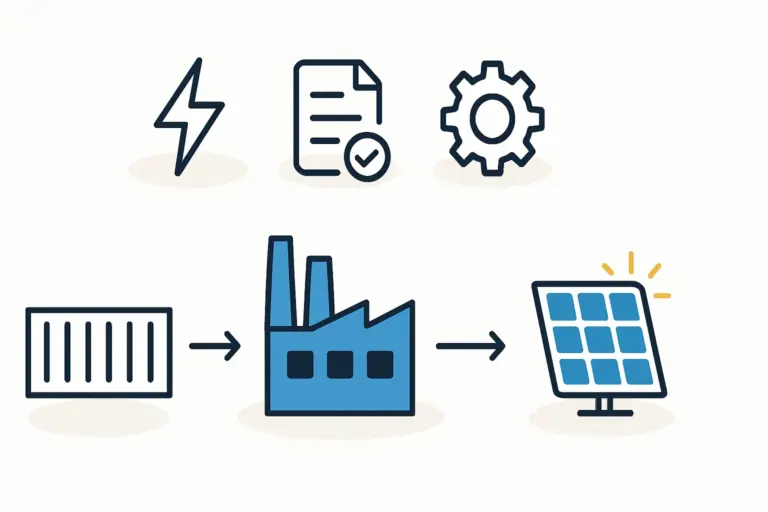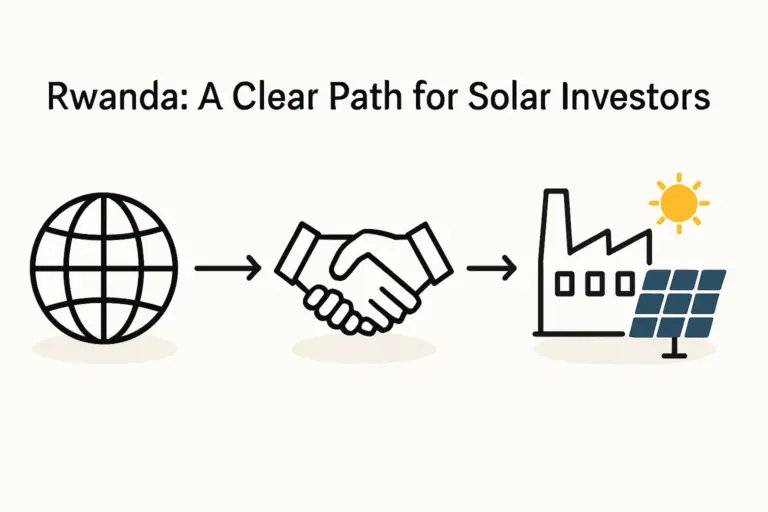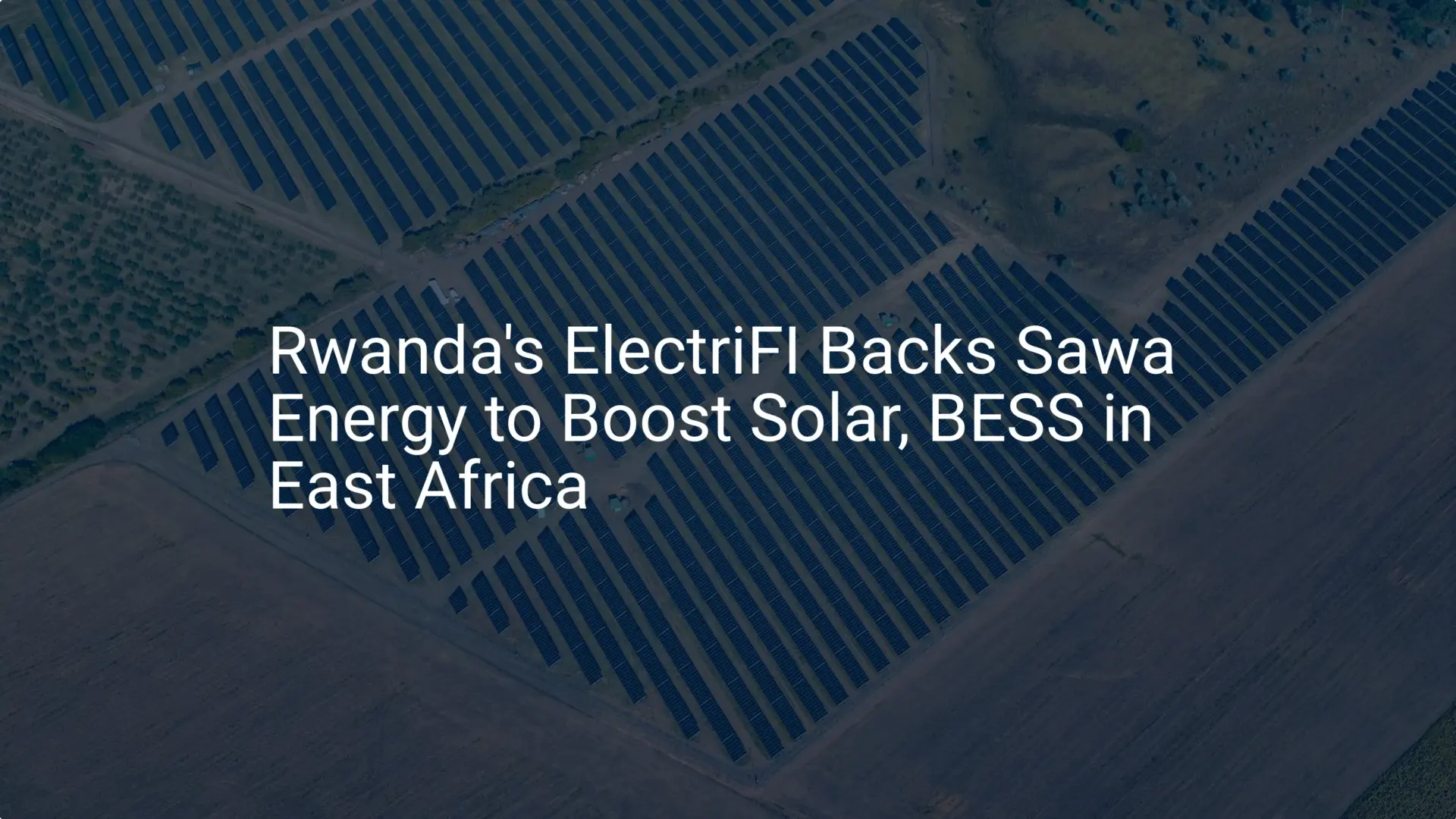An entrepreneur planning to establish a solar module factory in Kigali faces a unique geographical challenge. While the end product will power Rwandan homes and businesses, the essential raw materials—from solar cells and EVA film to glass and aluminum frames—must begin their journey thousands of kilometers away at a bustling seaport.
The success of the entire manufacturing operation hinges on the efficiency and reliability of the supply chain connecting that port to the factory floor. For any professional entering this sector, understanding the logistics of a landlocked country like Rwanda isn’t a minor detail—it’s a core strategic component.
This article examines the two primary import corridors to Rwanda, outlining the critical processes and risk mitigation strategies needed to build a resilient supply chain for inbound machinery and raw materials.
The Two Primary Lifelines: Mombasa and Dar es Salaam Corridors
Rwanda’s access to maritime trade runs primarily through two major East African ports: Mombasa in Kenya and Dar es Salaam in Tanzania. The choice between these corridors isn’t arbitrary; it requires a careful calculation of distance, infrastructure quality, transit time, and cost.
Each route presents distinct advantages and challenges that must be factored into any viable solar module manufacturing business plan.
The Central Corridor via Dar es Salaam, Tanzania
Geographically, the Port of Dar es Salaam is the closest major seaport to Kigali, an overland distance of roughly 1,500 kilometers. This route, known as the Central Corridor, typically involves the following stages:
- Port Handling: Offloading containers from the vessel at the Port of Dar es Salaam.
- Overland Transit: Transporting goods by truck across Tanzania to the Rusumo One-Stop Border Post.
- Border Crossing and Final Leg: After customs formalities, the final leg of the journey continues to Kigali.
Typical transit times from Dar es Salaam to Kigali range from 14 to 21 days, depending on port congestion, road conditions, and the efficiency of the border crossing. While shorter, this corridor can experience infrastructure-related delays, making robust planning essential.

The Northern Corridor via Mombasa, Kenya
The Port of Mombasa offers an alternative—an albeit longer route of roughly 1,700 kilometers. The Northern Corridor is often favored for its more developed infrastructure and streamlined customs procedures under the East African Community’s Single Customs Territory (SCT).
The process involves:
- Port Handling: Offloading at the Port of Mombasa.
- Overland Transit: Transporting goods by truck through Kenya and Uganda to either the Gatuna or Kagitumba border posts.
- Border Crossing and Final Leg: Final transit to a bonded facility in Kigali.
The key advantage here is often predictability. The SCT allows customs declarations to be made and taxes assessed at the first point of entry (Mombasa), with goods then moving under a single bond to their destination in Rwanda. This can significantly reduce delays at internal borders.
From Port to Production Floor: Key Logistical Processes
A container being offloaded from a ship is far from the end of the journey. It is during the overland transit and final customs clearance that careful management and experienced partners truly prove their worth.
Customs Clearance: A Critical Milestone
A common misconception among newcomers is that customs clearance happens at the seaport. For goods destined for Rwanda, clearance and duty payments are processed inland at facilities in Kigali. Goods travel from the port ‘in bond,’ meaning they are sealed and not officially imported into Kenya or Tanzania.
This process requires meticulous documentation, including:
- Bill of Lading (B/L): The contract between the goods’ owner and the carrier.
- Commercial Invoice: Details the transaction between the seller and buyer.
- Packing List: An itemized list of the shipment’s contents.
- Certificate of Origin: Verifies the country where the goods were manufactured.
Errors in this paperwork are a frequent cause of costly delays. This is particularly true when importing a complete turnkey solar manufacturing line, where dozens of crates of sophisticated equipment must be accurately documented.
Overland Transit: The Final and Most Critical Leg
The final 1,500+ kilometers are entirely by road. Road conditions, route security, and driver reliability are all significant variables. This stage poses the highest physical risk to the cargo, from vibrations affecting sensitive machinery to the potential for accidents or theft. Proper packaging, secure loading, and real-time tracking are essential tools for managing this part of the supply chain.

Mitigating Risk in Your Supply Chain
Experience with turnkey projects in emerging markets shows that a proactive approach to risk management is fundamental. The following strategies are essential for ensuring your materials and machinery arrive safely and on schedule.
Selecting the Right Logistics Partners
The single most important decision an entrepreneur will make is choosing a freight forwarder and a local clearing agent. An experienced forwarder with a strong East African network can navigate port complexities, book reliable trucking companies, and manage documentation efficiently. A competent Rwandan clearing agent is indispensable for handling the final customs procedures with the Rwanda Revenue Authority, ensuring compliance and minimizing delays.
The Role of Comprehensive Insurance
Standard carrier liability is rarely sufficient to cover the full value of a shipment. Securing comprehensive ‘All Risks’ cargo insurance is a non-negotiable expense. This policy should cover goods from the supplier’s warehouse until they are safely delivered to the factory site in Kigali, protecting the investment against loss or damage in transit.
Building Delays into Your Project Timeline
Even with the best partners, delays are a reality of international logistics. Port strikes, political instability in transit countries, customs inspections, or mechanical issues can all disrupt schedules. A prudent project plan incorporates a buffer of several weeks for both sea and land freight to absorb unforeseen events without derailing the factory setup timeline.

Frequently Asked Questions (FAQ) for Entrepreneurs
-
What is a ‘clearing agent’ and why is one necessary?
A clearing agent is a licensed professional who acts on the importer’s behalf to handle all customs-related formalities. They prepare and submit documentation, calculate duties and taxes, and facilitate the inspection and release of goods. Their local expertise is essential for navigating regulatory requirements. -
How do import duties work for manufacturing equipment in Rwanda?
The Rwandan government, through the Rwanda Development Board (RDB), offers investment incentives that can include exemptions on import duties for capital goods and raw materials. It’s crucial to engage with the RDB early in the planning process to understand and secure these benefits. -
What is the difference between FOB and CIF shipping terms?
FOB (Free On Board) means the seller is responsible for the goods until they are loaded onto the vessel at the port of origin. The buyer is then responsible for the sea freight, insurance, and all subsequent costs. CIF (Cost, Insurance, and Freight) means the seller is responsible for the cost of the goods, marine insurance, and freight charges to the destination port. For a project in Rwanda, the buyer must still manage the expensive and complex overland portion. -
How much buffer time should be planned for shipping delays?
A conservative estimate is to add three to four weeks to the standard sea freight transit time and another one to two weeks for the overland portion. This accounts for potential port congestion, customs inspections, and road transport delays.
Conclusion: Planning for a Resilient Supply Chain
Establishing a solar factory in a landlocked country like Rwanda presents logistical challenges that demand diligent planning and expert execution. The choice between the Mombasa and Dar es Salaam corridors, meticulous management of customs documentation, and the selection of reliable logistics partners are all pivotal to success.
By treating the supply chain not as an afterthought but as a central pillar of the business strategy, an entrepreneur can build a resilient and cost-effective operation. This foundational work ensures that the flow of essential machinery and raw materials becomes a source of strength—not a point of failure—for the new manufacturing venture.






